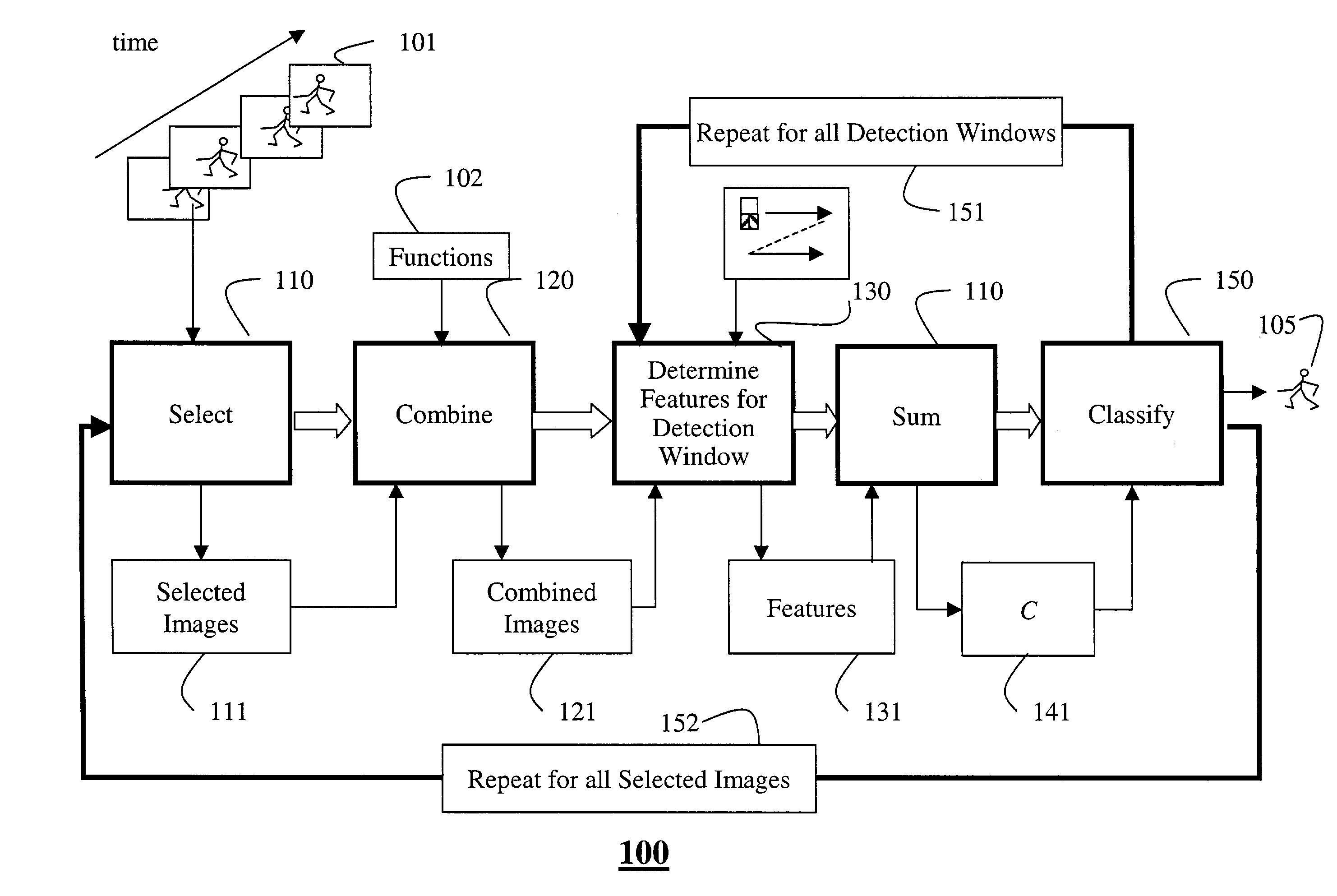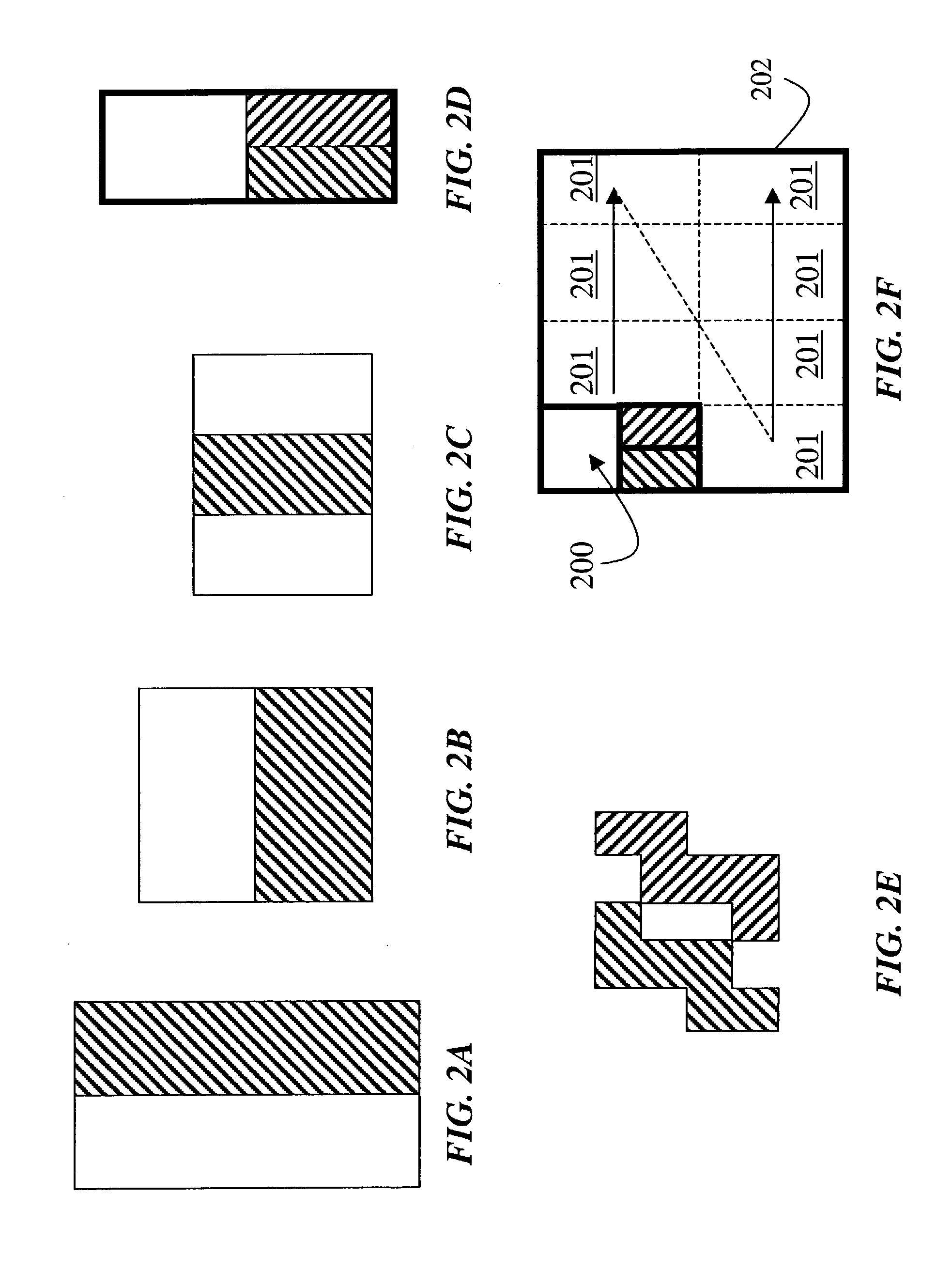Detecting pedestrians using patterns of motion and appearance in videos
- Summary
- Abstract
- Description
- Claims
- Application Information
AI Technical Summary
Benefits of technology
Problems solved by technology
Method used
Image
Examples
Embodiment Construction
[0016]FIG. 1 shows a method 100 for detecting a moving object 105, e.g. a pedestrian, in a temporally ordered sequence of images 101, i.e., a video. Selected images 111 are obtained 110 from the input video 101, e.g. adjacent pairs, overlapping pairs, every third image, etc. Functions 102 are applied 120 to the selected images 111 to produce sets of combined images 121. The combined images are partitioned into detection windows or “patches” of various sizes, for example, the entire image, four windows, each ¼ of the image, and so forth. Filters 200 are scanned and evaluated over the detection windows of the sets of combined images to determine 130 features 131, which are summed 140 into cumulative scores C 141. The cumulative scores are classified 150 to determine whether, indeed, a specific detection window includes a particular type of moving object, for example, a pedestrian 105. This is repeated 151 for all detection windows, for all combined images, and then repeated 152 for al...
PUM
 Login to View More
Login to View More Abstract
Description
Claims
Application Information
 Login to View More
Login to View More - Generate Ideas
- Intellectual Property
- Life Sciences
- Materials
- Tech Scout
- Unparalleled Data Quality
- Higher Quality Content
- 60% Fewer Hallucinations
Browse by: Latest US Patents, China's latest patents, Technical Efficacy Thesaurus, Application Domain, Technology Topic, Popular Technical Reports.
© 2025 PatSnap. All rights reserved.Legal|Privacy policy|Modern Slavery Act Transparency Statement|Sitemap|About US| Contact US: help@patsnap.com



